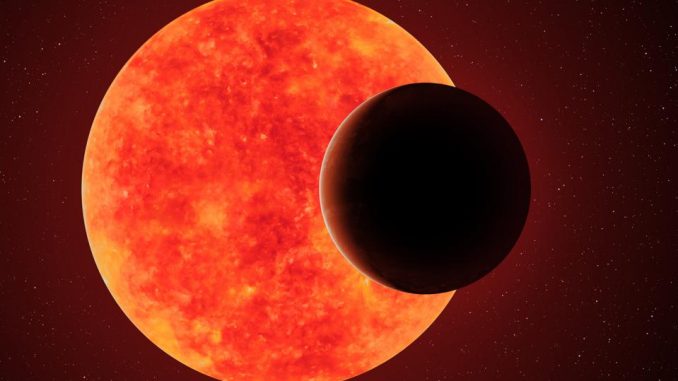
Scientists Discover New Exoplanet, To Be Monitored Using Webb Telescope.
- Researchers detected the first planet, LP 890-9b, around the star using NASA’s $287 million Transiting Exoplanet Survey Satellite (TESS).

Scientists have discovered two “super-Earth” exoplanets, one of which is in its star’s habitable zone. That means liquid water could exist on its surface.
The planet, known as LP 890-9c or SPECULOOS-2c, was found around a red dwarf star that’s around 100 light-years from Earth in the constellation Eridanus. Red dwarf stars are cooler than our Sun and easily the most abundant in our Milky Way galaxy, making up about 80% of the population as far as astronomers know.
Among potentially habitable terrestrial planets currently known to astronomers LP 890-9c appears to be the second-most favorable target, according to its discoverers. It was found by accident while scientists checked their initial discovery of another exoplanet around the same star, called LP 890-9/TOI-4306/SPECULOOS-2. It’s the second-coolest star found to host planets after the famous TRAPPIST-1 star system, which hosts up to seven planets and has been subbed “solar system 2.0.”
Published in the journal Astronomy & Astrophysics, researchers detected the first planet, LP 890-9b, around the star using NASA’s $287 million Transiting Exoplanet Survey Satellite (TESS) and followed it up using ground-based telescopes in the SPECULOOS consortium in Chile and Tenerife. LP 890-9b orbits its star in 2.7 days and is too hot to host liquid water.
READ ALSO: Why Parents Shouldn’t Blame Themselves For How Their Kids Turn Out
Luckily, TESS is limited in what it can detect so observations require double-checking. It finds exoplanets by detecting a slight dimming of a star as a planet—or its shadow—transits across its surface.
“A follow-up with ground-based telescopes is often necessary to confirm that the detected candidates are actually planets and to then learn more about their properties”, said Dr. Laetitia Delrez, FNRS Postdoctoral Researcher at the University of Liège, Belgium, and lead author of the study.
“This follow-up is particularly important in the case of relatively cold stars, such as TOI-4306, which emit most of their light in the near-infrared and for which TESS has a rather limited sensitivity.”
For further reading, visit HERE





Leave a Reply